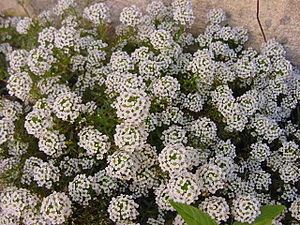[amazon_link asins=’B009ZVAB0Y,B06W9JWNJC,B00Q2PRZSM,B06XZPNWNY’ template=’ProductCarousel’ store=’finmeacur-20′ marketplace=’US’ link_id=’28045e61-1ba8-11e7-8b1a-b976d77396b3′]
[amazon_link asins=’B06W9JWNJC,B01HEB0UJ8,B06XGPQD6S,B01N37OQJH,B06XZPNWNY,B00Q2PRZSM,B00WCE5BNS,B01MZ0YMRQ’ template=’ProductLink’ store=’finmeacur-20′ marketplace=’US’ link_id=’600b7a27-1ba8-11e7-95ca-efe5af6e4d33′]
Botanical Name:Chenopodium capitatum
Family : Chenopodiaceae/Amaranthaceae
Genus : Chenopodium
Kingdom: Plantae
Division: Magnoliophyta
Class: Magnoliopsida
Order: Caryophyllales
Species: C. capitatum
Synonyms: Blitum capitatum – L.
Other Names :Blite Goosefoot, Strawberry Goosefoot, Strawberry Spinach, Indian Paint, and Indian Ink.
SIMILAR SPECIES: C. capitatum is the only species of the genus in Ohio with large, succulent, bright red, globular fruits.
Habitat: It is native to most of North America throughout the United States and Canada, including northern areas. It is considered to be endangered in Ohio. It is also found in parts of Europe and New Zealand. Strawberry Blite is found in moist mountain valleys.
Description:
Erect annual or biennial herb growing to 0.6m. It is an edible annual plant.Flowers are small, pulpy, bright red and edible, resembling strawberries. Flowers: May-Aug., fruits June-Sept. The juice from the flowers was also used as a red dye by natives. The fruits contain small, black, lens-shaped seeds that are 0.7-1.2 mm long. The greens are edible raw or as a potherb, but should be eaten in moderation.
CLICK & SEE THE PICTURES
It is in flower from July to August, and the seeds ripen from August to September. The flowers are hermaphrodite (have both male and female organs) and are pollinated by Wind.
The plant prefers light (sandy), medium (loamy) and heavy (clay) soils. The plant prefers acid, neutral and basic (alkaline) soils. It cannot grow in the shade. It requires moist soil.
Cultivation :
An easily grown plant, succeeding in most soils but disliking shade. It prefers a moderately fertile soil. A very ornamental plant, strawberry blite has at times been cultivated for its edible leaves.
Propagation
Seed – sow spring in situ. Most of the seed usually germinates within a few days of sowing.
Edible Uses
Edible Parts: Fruit; Leaves; Seed.
Edible Uses: Colouring.
Leaves – raw or cooked. Used like spinach, they are a good source of vitamins C and A. The young leaves are best. Poor quality. The raw leaves have been used in salad mixtures, but should only be eaten in small quantities, see the notes above on toxicity. Fruit – raw or cooked. An insipid but sweet flavour, they can be added to salads. The fruit is about 12mm in diameter. A red food colouring can be obtained from the fruit. Seed – cooked. It can be ground into a meal and mixed with cereal flours in making bread etc. The seed is small and fiddly, it should be soaked in water overnight and thoroughly rinsed before it is used in order to remove any saponins.
Medicinal Actions & Uses
Antiphlogistic; Pectoral.
The plant has been used as a lotion for treating black eyes and head bruises. The juice of the seeds and an infusion of the plant has been used to treat lung congestion.
Other Uses
Dye.
Gold/green dyes can be obtained from the whole plant. A red dye is obtained from the fruit, it is used in cosmetics and as a paint.
Known Hazards: The leaves and seeds of all members of this genus are more or less edible. However, many of the species in this genus contain saponins, though usually in quantities too small to do any harm. Although toxic, saponins are poorly absorbed by the body and most pass straight through without any problem. They are also broken down to a large extent in the cooking process. Saponins are found in many foods, such as some beans. Saponins are much more toxic to some creatures, such as fish, and hunting tribes have traditionally put large quantities of them in streams, lakes etc in order to stupefy or kill the fish[K]. The plants also contain some oxalic acid, which in large quantities can lock up some of the nutrients in the food. However, even considering this, they are very nutritious vegetables in reasonable quantities. Cooking the plants will reduce their content of oxalic acid. People with a tendency to rheumatism, arthritis, gout, kidney stones or hyperacidity should take especial caution if including this plant in their diet since it can aggravate their condition.
Disclaimer:The information presented herein is intended for educational purposes only. Individual results may vary, and before using any supplements, it is always advisable to consult with your own health care provider
Resources:
http://www.pfaf.org/database/plants.php?Chenopodium+capitatum
http://commons.wikimedia.org/wiki/Category:Chenopodium_capitatum
http://en.wikipedia.org/wiki/Chenopodium_capitatum
http://www.em.ca/garden/native/nat_Chenopodium%20capitatum.html
Click to access Chenopodium_capitatum.pdf
![Reblog this post [with Zemanta]](https://i0.wp.com/img.zemanta.com/reblog_e.png?w=580)


































